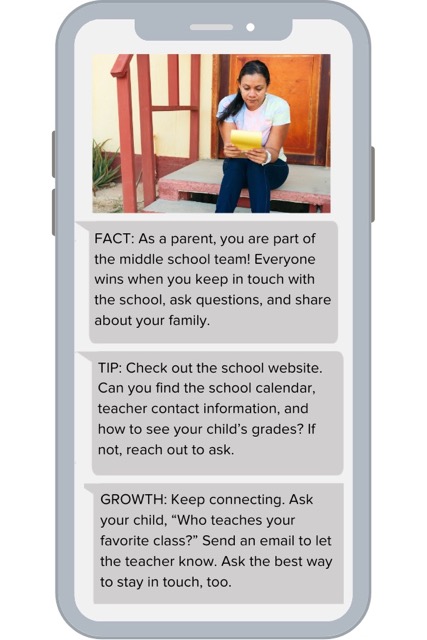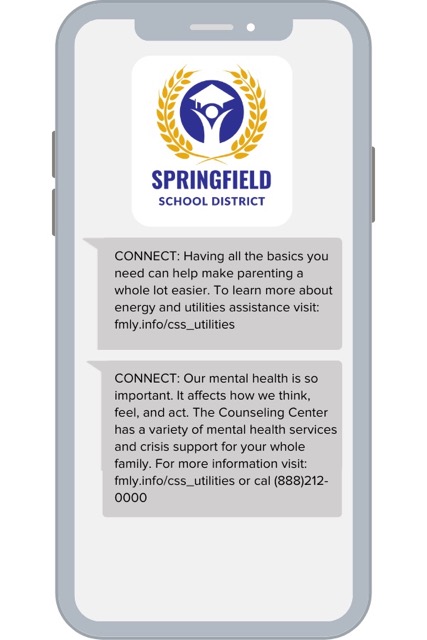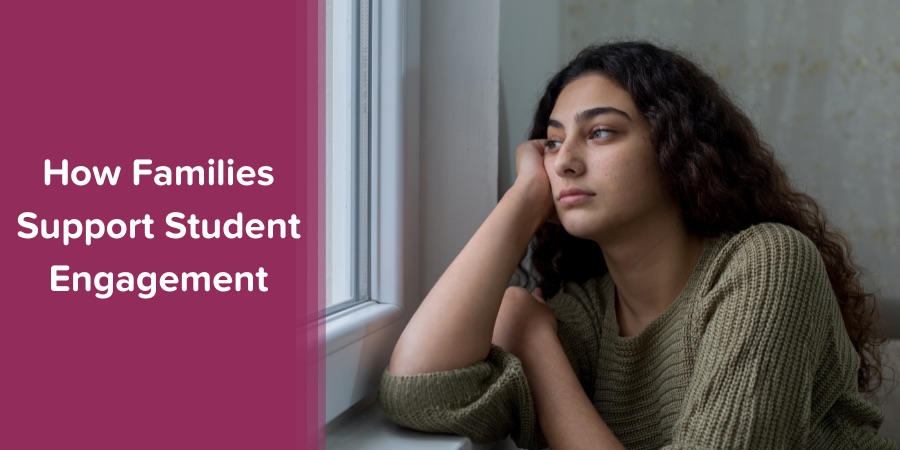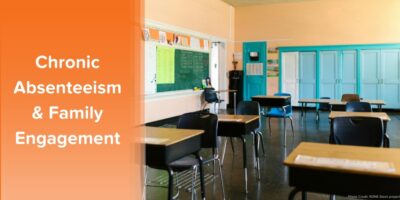By Maren Madalyn, contributing writer
When I hear the phrases positive student engagement or engaging disengaged students, so many examples from my days working in the classroom come to mind.
I picture that one student who never missed a day of school, except when flu season would finally catch up with him. I remember those group activities in which every child’s hand shot into the air as our teacher peppered them with questions. I think of those adorable moments when two students discovered a shared interest or helped each other, fostering meaningful relationships that made them eager to come back to school.
I also remember that empty chair where one student struggling with housing security would normally sit. I revisit those overwhelming emotions of another student that consistently bubbled up during independent reading time. I picture moments when two students got into a disagreement that rattled their cherished social connections.
Each school day brought differing levels of engagement among our students. And many times, the things that most affected their ability to attend to their learning were out of their hands and mine as an individual educator.
But here’s the thing: student disengagement isn’t just one person’s responsibility to address. What made all the difference in engaging disengaged students in our classroom was strategically and collaboratively partnering with key adults in their lives — their parents, caregivers, uncles and aunts, and more.
What impacts student engagement and attendance?
According to the Glossary of Education Reform, student engagement in K-12 schools can be defined as the “degree of attention, curiosity, interest, optimism, and passion that students show when they are learning or being taught, which extends to the level of motivation they have to learn and progress in their education.”
In other words, it’s how well and how successfully students “attend” to their learning.
Regular attendance (including being physically present in school) is an important part of this readiness to learn, but it’s certainly not the only factor that affects it. Here are just a few of the many elements that research shows can impact students’ engagement.
External circumstances
This factor can ripple out and affect all the others listed here (and more), which is why it is critical to start here first. Challenges such as inadequate basic resources, lack of transportation methods, traumatic events (past or present), systemic barriers within education systems, and poverty significantly impact a student’s level of engagement in the classroom and beyond it. These examples can also affect both acute and chronic absenteeism patterns.
Conversely, when a student has their fundamental needs met — when they have food, shelter, safety, a consistent means to get to school, an inclusive and bias-free environment, etc. — they are better positioned to attend to their school experiences.
Academics
Calibrating instruction to each student’s unique learning style or needs also contributes to their engagement in learning. When a student’s learning level does not match what they are taught, their engagement may shift. This is true both for students who are behind in learning and for students ahead of the curve.
Take literacy development, for example. You wouldn’t hand a toddler a paperback novel and expect them to magically figure out how to read it! You’d start with the basics: oral language skills, phonemic awareness, letter knowledge, and vocabulary development. Similarly, an advanced reader might easily tire of reading books that are not challenging for them.
Engaging these students requires understanding each child’s unique needs for learning and challenge, then personalizing instructional strategies to those needs.
Social-emotional wellbeing
Mental health and wellbeing affect how well students (and adults) can attend to their surroundings. Research has consistently shown that social emotional learning (SEL) contributes positively to a student’s learning and growth. On the other hand, when students struggle with things like social connections and stress management, it can impact their engagement in school.
SEL and mental health are especially relevant for students in middle school and high school. This period can feel particularly vulnerable as adolescents establish their unique selves, form personal relationships with peers, and navigate many physiological changes.

Sense of belonging and connection to future goals
Humans are social creatures! When students feel welcomed, represented, and supported within the school community — exactly as they are — they are more likely to feel emotionally connected with their peers and the adults around them. This sense of belonging creates a more positive learning environment and is essential for sustaining a student’s engagement. Plus, meaningful relationships with their peers can be a strong motivator for attending school consistently.
A student’s sense of belonging also refers to how classroom learning connects with students’ future career goals or educational plans. Seeing how their school experiences link to their personal goals can be very motivating for high schoolers. However, when this connection between academics and future plans isn’t clear, it can impact student engagement, to the point where even teens with passing grades may drop out of high school.
Engaging disengaged students is a team effort
What do all of those factors of student engagement have in common? They are, to some degree, beyond a student’s full control to change.
In fact, they are not within any educator’s direct control, either. Instead, each of these factors is influenced by the entire school community — including students’ families and primary caregivers.
And this is why family partnerships are so powerful when it comes to engaging disengaged students.
Strong relationships with families can greatly support educators as they create a positive learning environment in which all students eagerly engage. And research about effective family engagement backs this notion — when families are partners in student learning, academic performance improves, graduation rates go up, and students are more prepared and regulated for learning. Even teacher satisfaction increases!
5 helpful habits for healthy student engagement
Just like with students’ learning journeys, there is no one-size-fits-all approach to cultivating high-impact family-school partnerships. Each school and each family will contribute unique perspectives and contexts to these collaborations. What’s essential here is that both parties come to the table and, through whatever approaches work best for their community, co-create solutions to engaging disengaged students and address barriers to learning through mutual trust and respect.
There are also certain habits of family engagement in schools that can help set the tone for positive collaboration from the start. Let’s dive in!
Create openings for families to communicate with school
Families have a wealth of knowledge about their unique and individual students. This information is often crucial to help educators with identifying what factors may be affecting disconnected students, and how to shift them.
But expecting families to open up to educators at the first “hello” is lofty. Instead, regular habits of communication can slowly and steadily open those doors for information exchange between home and school. These practices include setting clear expectations for how families can reach out to educators and encouraging such connections.
This sample ParentPowered message on the right coaches families to investigate what positive communication might look like with their schools:

Empower families with strategies to connect at home
Especially during adolescence, a student’s natural desire for greater independence can clash with a caregiver’s approaches to support their learning and growth. As a result, it can feel really challenging for families to know how to connect with their teens.
But research shows that strong adult-teen relationships make a huge difference in a number of areas, including directly on adolescents’ wellbeing (Silva et al., 2020) as well as indirectly learning motivation and engagement (Shao & Kang, 2022). Effective communication skills during this critical stage of development can cultivate positive relationships with students and their caregivers that also honor teens’ increasing independence.
Offer families of adolescents our communication guide, full of tips and prompts to help guide caregivers as co-pilots supporting their teens to take flight.
Cultivate belonging through inclusivity and student voice
An inclusive school and classroom culture, where everyone feels valued, can make a significant difference in students’ engagement. Inclusivity means honoring linguistic and cultural diversity, yes. But it’s also about uplifting the many unique and wonderful perspectives, personal experiences, and values that every student (and by proxy, every family) brings to a school community.
Creating opportunities for students to use their voice in their learning journey is just one of the many practices that educators can leverage to foster that sense of ownership and belonging that underpins student engagement. For example, educators can support teens in high school with crafting individual learning plans or to career planning for their future after graduation.
Families play just as vital a role in supporting teens with driving their learning, especially with facilitating those critical conversations with teens about how school experiences impact their postsecondary plans.
Connect families to essential community resources
No matter where a person comes from, they will always have fundamental needs that must be met before they have the capacity to attend to their education, job, family, community, and more. Think: food, shelter, safety, healthy relationships, the like.
Even though some family circumstances, like housing insecurity, are often beyond a school’s ability to control, educators are still well positioned to be conduits for linking families with those resources that can support these needs.
Connecting families with community resources is a core component to our Trauma-Informed family engagement program. Educators can use the Community Support Stream feature to curate text messages that send families links to or information about local and national resources like food banks, libraries, free or low-cost healthcare clinics, and more.
It’s a simple but powerful way to help families receive the support they may need, and in turn, to cultivate students’ capacity to engage in learning at school. Read more about ParentPowered Trauma-Informed and the protective factors framework behind the curriculum.

Help caregivers (and educators) care for themselves
Mental health and wellbeing isn’t just important for engaging disconnected students. Adult wellbeing can bring positive outcomes to student engagement, too.
When parents and caregivers tend to their own needs, they are in a better position to respond to the needs of their children, as well as recognize what strategies are most effective to help their kids cope. Educators also benefit from caring for their mental health, allowing themselves to be nourished and resourced to fully attend to their students and the instructional strategies that best support them.
As a bonus, witnessing positive educator and parent self care habits (and having conversations about wellbeing) helps students build their own practices.
ParentPowered is your partner in both family and student engagement
Engaging disengaged students can feel complex and overwhelming to navigate as an educator. But you, your families, and even your students need not tackle this challenge alone!
ParentPowered is your partner to cultivate positive student engagement through strong family-school partnerships, from birth through high school. Our low-lift, high-impact family engagement programs inspire and activate caregivers with simple, accessible, strengths-based insights that they can integrate into everyday teachable moments. They also tee up connection opportunities between families and educators to foster those critical relationships that drive student engagement.
Join an upcoming info session to learn more about how our programs can support your top priorities for teaching learning — whether they include attendance, student engagement, and beyond!
About the author
Maren Madalyn has worked at the intersection of K12 education and technology for over a decade, serving in roles ranging from counseling to customer success to product management. She blends this expertise with fluid writing and strategic problem-solving to help education organizations create thoughtful long-form content that empowers educators.








